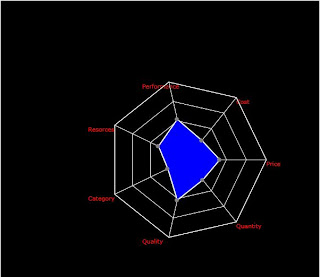jQuery Mobile.- Play with jQuery (No coding knowledge required.)
JQuery Mobile (Alpha 2.0).
Introduction
o jQuery Mobile, a user interface (UI) framework to write a functional mobile
web application without writing a single line of JavaScript code.
jQuery Mobile
o jQuery Mobile is a touch-friendly web UI development framework that allows to
develop mobile web applications that work across smart phones and tablets. The
jQuery Mobile framework builds on top of jQuery core and provides a number of
facilities, including HTML and XML document object model (DOM) traversing and
manipulation, handling events, performing server communication using Ajax, as
well as animation and image effects for web pages. The mobile framework itself
is a separate, additional download of around 12KB (minified and gzipped) from
jQuery core, which is around 25KB when minified/gzipped. As with the rest of
the jQuery framework, jQuery Mobile is a free, dual-licensed (MIT and GPL)
library.
Downloads available @
o
http://www.ibm.com/developerworks/web/library/wa-jqmobile/#download
o http://www.ibm.com/developerworks/web/library/wa-jqmobile/
Basic features of jQuery Mobile include:
General simplicity
o The
framework is simple to use. We can develop pages mainly using markup driven
with minimal or no JavaScript.
Progressive enhancement and graceful
degradation
o While jQuery Mobile leverages the latest HTML5, CSS3, and JavaScript, not
all mobile devices provide such support.
Accessibility
o jQuery Mobile is designed with accessibility in mind. It has support for
Accessible Rich Internet Applications (WAI-ARIA) to help make web pages
accessible for visitors with disabilities using assistive technologies.
Small size
o The overall size of the jQuery Mobile framework is relatively small at
12KB for the JavaScript library, 6KB for the CSS, plus some icons.
Theming
o The framework also provides a theme system that allows us to provide our own
application styling.
Browser support
o Not all mobile devices provide support for HTML5, CSS 3, and
JavaScript.
o jQuery Mobile currently provides support for the following mobile platforms:
o Apple® iOS: iPhone, iPod Touch, iPad (all versions)
o Android™: all devices (all versions)
o Blackberry® Torch (version 6)
o Palm™ WebOS Pre, Pixi
o Nokia® N900 (in progress)
Structure of a jQuery Mobile page
o jQuery Mobile has guidelines on the structure of pages themselves. In
general, a page structure should have the following sections:
·
Header bar
o Typically contains the page title and Back button
Content
o The content of your application
Footer bar
o Typically contains navigational elements, copyright information, or whatever
you need to add to the footer
Example:
HTML head section
Attributes that are telling jQuery
Mobile what this element is, how to look like and how to behave.
Defining a page block:
Page header bar section:
Page content section:
Footer bar section:
Adding a navigation bar to the footer section:
Defining multiple local pages
jQuery Mobile also provides support for
multiple pages within a single HTML document. The multiple pages are local,
internal linked "pages" that we can group together for preloading
purposes. The structure of the multipage page is similar to the previous
example of a single page, except that it will contain multiple page data-roles.
Listing 8 shows an example.
Page transitions:
·
jQuery Mobile provides
support for CSS-based page transitions (inspired by jQtouch), which are applied
when navigating to a new page and back. The transitions include:
Slide
·
Provides a horizontal
transition
·
Slide up and Slide down
·
Provide transitions up and down the screen
Pop
·
Provides an explode type of
transition
Fade
·
Provides a fading transition
Flip
·
Provides a flip transition
·
We can add page transitions in two different ways:
1. Add a data-transition attribute to
the link, using
o
Use the data-transition attribute on static pages.
o
Programmatically, using $.mobile.changePage("pendingtasks.html",
"slideup");
o
Use the programmatic approach when working with dynamic pages.
2. List views:
o
JQuery mobile supports numerous list views.
Forms
Forms are used to post information to a server.
·
jQuery Mobile supports many form UI components: text inputs,
search inputs, slider, flip toggle switch, radio buttons, checkboxes, select
menus, and theming forms.
Select menus are driven by native
·
All
form should be wrapped inside the form tag that has an action and method which
will handle the form data processing to the server.
Advantages of jQuery Mobile:
1.
Ease
of development: Easy to learn and develop applications with the knowledge of
HTML5, css, jquery.
2.
Cross
platform and cross browser compatibility.
3.
Easy
to create custom theme with the help of jQuery framework.
4.
Responsive
design for all devices.
Disadvantages of jQuery Mobile:
1.
Limited
options of css themes.
2.
Quite
slower that mobile native applications.
3.
Difficult
to provide customized design as compared to native design.
4.
All
the features of the device cannot be accessed by scripting.

Comments
Post a Comment